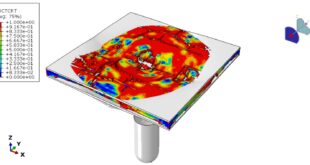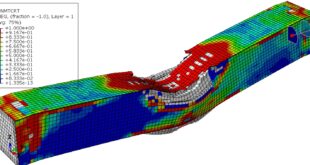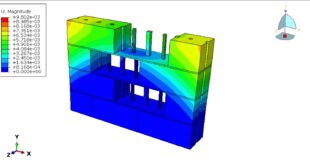In this tutorial, the Simulation Pressure Distribution on Subgrade Soil Underlying Geocell Reinforced Foundation Bed in Abaqus has been studied. High contact stresses generated in the foundation soil, owing to increased load, causes distress, instability, and large settlements. Present days, geocell reinforcement is being widely used for the performance improvement of foundation beds. With an increase in loading due to high-rise structures, contact pressures on foundation soils have increased by manifold leading to distress, instability and large settlements. Hence, the requirement for improvement of soil has increased markedly. The introduction of geosynthetic reinforcements in the foundation soil is a potential solution. In this avenue, geocell reinforcement is a recently developed technique that offers overall confinement to the soil within its three-dimensional pockets, thereby increases the overall rigidity of the soil bed, leading to improved performance. Commercially available geocells manufactured from high-density polyethylene sheets, ultrasonically welded in a honeycomb pattern. The soil is modeled as a three-dimensional solid part and the geocell is modeled as a three-dimensional shell part. You can see a figure of the assembled parts below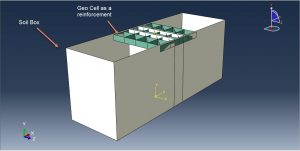
To model geocell behavior, elastic data and to model soil behavior, elastic data with Cap model plasticity with hardening is used. The two static steps to apply uniform pressure from the soil above the foundation and apply the normal load on the footing zone are considered. The geocell part is embedded inside the concrete host and a fixed boundary condition is assigned to the bottom surface of the soil. The gravity is applied to all parts in the first step and uniform pressure to the top surface of the soil part. The load as a velocity type is selected to apply the load on the footing zone in the middle of the soil. The mesh should be fine to achieve good results.
After the simulation all results such as stress, strain, displacement, stress-settlement diagram, and … are achievable. You can see some figures for the results below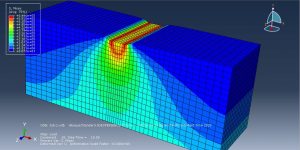
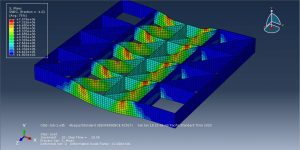
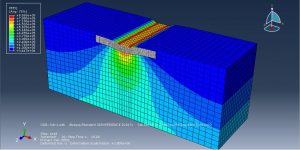
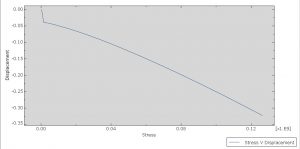
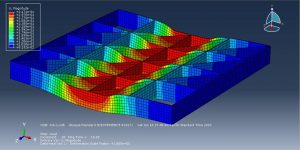
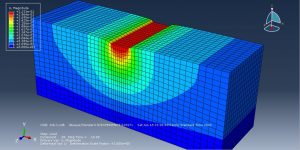
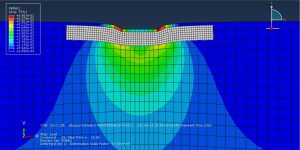
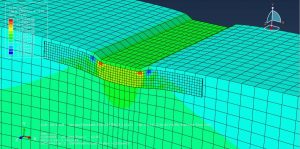
You can provide CAE ,INP,and English video files of this simulation here. The cost of these files is Twenty-Six Euros. you can click on the bellow bottom to beginning process
You can purchase the tutorial through a PayPal account, a Visa, or a Master card, just before payment,send me an email to this address: karampourp@gmail.com
 Abaqus tutorials Abaqus tutorials
Abaqus tutorials Abaqus tutorials
